I need some advice on baseboard heating for a cabin in British Columbia. I would like to connect three baseboard heater of 1750 watts, 1750 watts and 1000 watts to the same thermostat. These heaters are rated at 208 volts. I would use a 30 amp double pole breaker and 12-2 copper wire.
Is is OK to connect these heaters this way. My other option is two 2250 watt heaters. The room has two large windows at one end and is L shaped into the kitchen.
Any advice would be appreciated.
Thanks
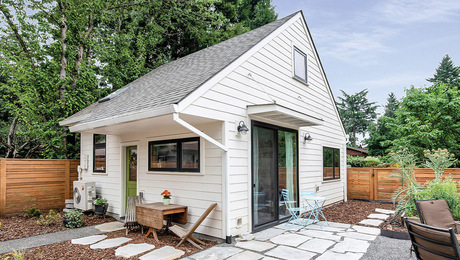
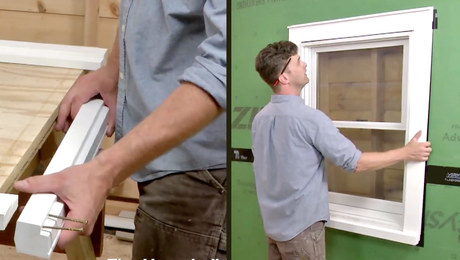
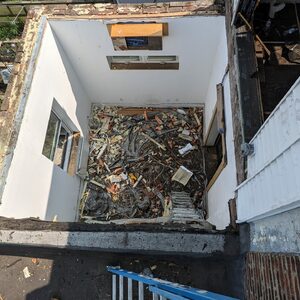
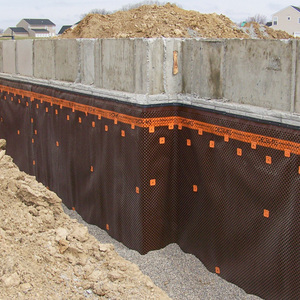
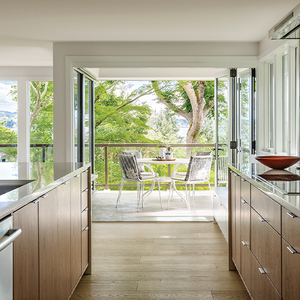
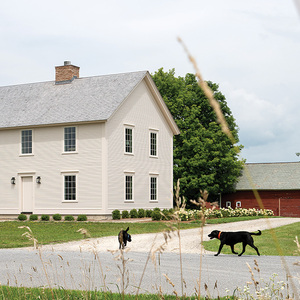













Replies
Seperate 20 amp circuts. 12/2NM/G wire or MC/G. 1 relay / contactor per circut. Gang wire the thermostat thru the relays. Use your oringinal 3 base board plan.
More work and money but safer.
30 amp circut wants #10 wire. Still need a contactor to make 3 base boards work well and right on 1 central thermostat.
The contactor can now be 110 coil over 220 volt contacts.
Brian
In BC you could use your 2x1750s plus 1 1000 w heaters on # 10 wire and a 30 amp breaker but you must be sure the thermostat is rated for your total wattage (or amperage)
You are also allowed to step down the wire size as you progress down the load. You calculations should be done at 230v rather than 208(your nominal voltage) Unless you have a 3 phase system in your cabin?
bake
Bakdo,
Are you sure on the reduction in wire size?
It seems that if there was a fault at the end of the circuit, the wire would not be properly protected as the overcurrent device is sized for the larger wire.
KM
I don't know the Canadian code.
And the US code does allow for "undersizing" wire in certain applications. Taps are one similar to this. But I have never had the need to go through the details. Motor circuits are another.
In a general purpose circuit you have the possibility of overloading by pluging in more devices.
However, in a dedicate, hard wired circuit, you don't have this possibility. The load is fixed by whatever is hardwired to it.
So you don't need to protect against overloading, but rather faults. And the types of faults that can be detected by a regular CD are typically shorts or arcs that draw very larger currents and will still trip the breaker before damage is done.
Thanks to all for you input on the baseboard heating question. I've re-read my BC Simplified Code Book and it looks like I can use all three heaters, 2-1750's and 1-1000 watt on the same 12/2 circuit as long as they draw 240 volts. That would give me 4500 watts at 240 volts for 18.75 amps. I can use a 30 amp breaker because it is a dedicated line and the amperage will never exceed the 18.75 amps even though 12/2 allows only 20 amps. The 30 amp will protect for faults or shorts but there is no need for it to trip at 20 amps because the heaters will only draw 18.5 amps.
If I used 208 volt heaters then it would draw 21.6 amps which would be too much for 12/2 wire, so I can't use those.
I'll use a 240volt/25A double pole thermostat.
I may still split the up heaters and use a contactor circuit but I am going to check with the inspector first to see if he has an opinion on the best and safest way to handle this.
Any other comments from the guys who helped would be welcome
Thanks again
And if by chance you sustain 28amps for some reason on that 12/2 and the 30A breaker holds.... Then what?
"And if by chance you sustain 28amps for some reason"
By what change would that be. In general the code looks at fault condictions when sizing things. But you have to come up with some "reasonable" way that it would happen.
The NEC allows similar "over fusing" for dedicated more circuits.
Take it as an example. Make it a what if, if you prefer.
The man wanted to load hell out of 12/2 and protect it with a 30A breaker. That's asking for trouble straight up. Some need an anology for some things to sink in. What happens if the system under goes a voltage drop of just a few percentage points? Hope his insurance premiums are in order. Instead of clashing encourage for the right and safe way. EOS.
"The man wanted to load hell out of 12/2 and" As I said in another message I have no idea what Canadian code is and I was taking the other persons word that the #12 is OK for this application. I see someone else says differently. But again with reading the whole code I don't know.
The 80% rate is only for CONTINOUS loads, that are loads over 3 hours. That would typically include baseboard heating, but it does not include domestic hot water heaters.
"What happens if the system under goes a voltage drop of just a few percentage points?"
The current DECREASES!
" Instead of clashing encourage for the right and safe way."
The right and safe way requires that you understand the total requirments.
#12 copper wire IS NOT RATED FOR 20 AMPS, PERIOD! Never has been!
Depending on the application it can be rated for LESS or MORE, MUCH MORE.
At 21 amps the wire does not self destruct.
In fact the basic ampacity rating for #12 is 25 amps for wire an cable. And if you use THNN connected to 90 degree rated devices it is rated for 30 amps. And in cordage with SO, SJO, and similar insulation it is rated at 25 amps.
And if you go with nickel coated wire and teflon insulation (TFE) and it is used in free air it is rated at 78 AMPS. That is all safe and allowed by the NEC if used for the proper application.
But on the other hand the wiring needs to be derated for applications with high tempature and/or many wires in one conduit.
Howver, for common branch circuits the NEC does limit the maximum over current protection to 20 amps. I have no idea if the CEC has this same limitation or not. If they don't and there are not derating requirements then #12 can SAFELY carry 80% of 25 amps continously and thus be fine for this load.
And again for special application the NEC does allow for overload protection LARGER than the nominal current carrying capacity of the wiring. That includes motor circuits, cooking appliacnes, and tap circuits.
Let me ask you this. When is the last time that you hooked up a ceilign fixture that was wired with #12 wire?
Brian,
CEC only allows conductors to be loaded to 80% of the maximum.
I don't have my code book at home, but if you say 12/2 is rated at 20 amps, by code you are only allowed to load to 16 amps.
20 amp wire should be protected by a 20 amp breaker.
two amps over on the conductors is likely not pushing it from a practical point of view, but the breaker should be sized to protect the wire.
As someone who really didn't used to think about things like insurance and liability I wouldn't have cared. But if there is ever a problem down the road, adjusters will look at everything to avoid paying, or trying to pin negligence on improper work.
KM